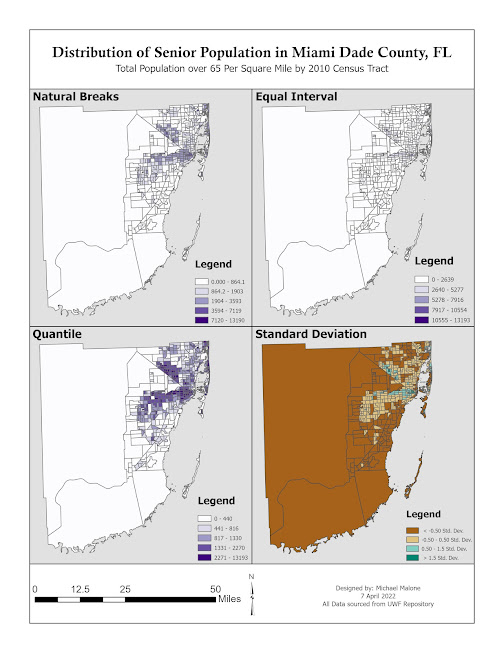This weeks module was about the different methods of data classification. The lab was designed to take these methods and apply them to a choropleth map, or more specifically two presentations of four maps each. Each presentation containing one map of Natural Breaks, Equal Breaks, Quantile, and the Standard Deviation classification methods. The above maps display these methods by analyzing the senior citizen distribution in Miami Dade County, FL. The top map was created in ArcGIS Pro first, it displays the percentage of senior citizens in each census tract and shows how the data is displayed differently using each of the classification methods. The bottom map was created by saving a copy of the top map and changing each frame to show the total population of senior citizens per square mile. Once these were finished we were tasks with determining what each method hides or reveals and which presentation was most accurate. I believe the total population per square mile is the least misleading and should be used since the percentage doesn't take the total population of each tract into account. This means that a tract could have a higher percentage of senior citizens but a smaller total number of seniors and still show up as darker on the map. I believe the standard deviation method is the most reliable since classes don't get watered down and are purely displayed by how far from the average each tract is.


Comments
Post a Comment